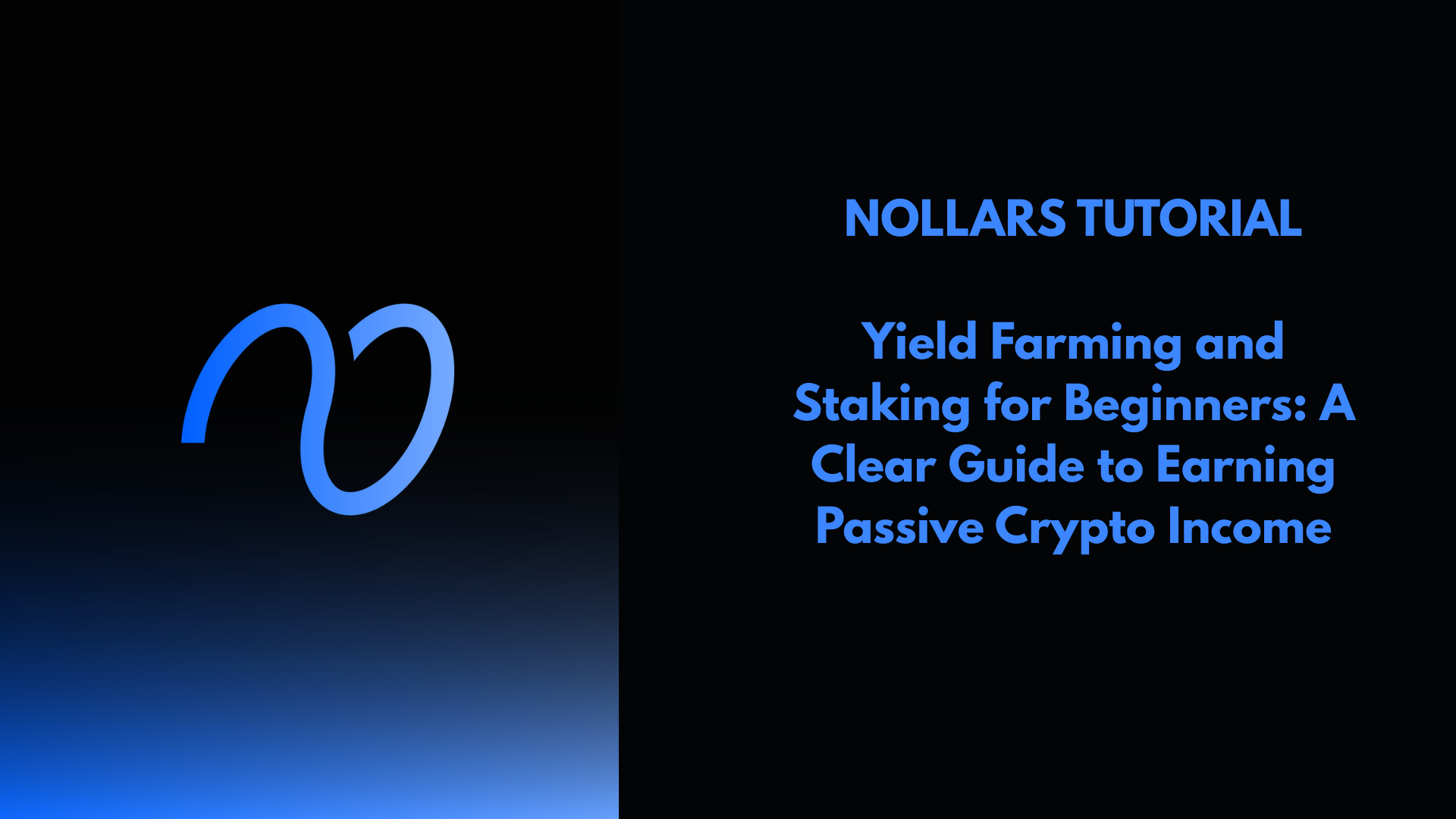Yield farming and staking are both popular ways to earn rewards with cryptocurrency. They let folks put their digital assets to work, but honestly, they’re not quite the same thing.
Yield farming is about providing liquidity to decentralized platforms to earn interest or extra tokens. Staking, on the other hand, means locking coins to help keep a network running and get some rewards in return.

These methods play a big role in decentralized finance (DeFi). They give people a shot at earning passive income.
If you’re just starting out, the terms can sound intimidating. But once you get the basics of yield farming and staking, you’ll see new financial doors opening up.
Digging into how these strategies generate returns helps you figure out which one lines up with your goals. For a clear breakdown, check out a beginner’s guide to DeFi yield farming.
Understanding Yield Farming and Staking
Both yield farming and staking let you earn rewards by holding or locking crypto. They do things differently and carry their own risks, but they’re both about creating passive income in the DeFi world.
What Is Yield Farming?
Yield farming means lending or providing crypto assets to liquidity pools on DeFi platforms. You deposit your tokens into these pools, letting others trade or borrow them.
In exchange, you earn rewards, usually more tokens. Sometimes, you’ll find yourself shifting assets between pools to chase the best returns—that’s called “liquidity mining.”
Yield farming can bring in higher profits, but it’s riskier. You might run into price swings or smart contract bugs. It’s best for folks who don’t mind keeping an eye on things and moving assets around.
For more about liquidity pools and how rewards work, check out this DeFi yield farming guide.
What Is Staking?
Staking means holding a specific cryptocurrency in your wallet to support a blockchain’s operations, like validating transactions. You lock your tokens to help keep the network secure and, in return, you get rewards based on how much you’ve staked.
It’s usually less hands-on than yield farming. Staking offers steadier, more predictable returns and generally carries lower risk, though the rewards aren’t always huge.
People who want to grow their crypto without a lot of trading tend to prefer staking. If you want to learn more about staking and its perks, take a look at Telcoin’s staking and yield farming overview.
Key Differences Between Yield Farming and Staking
| Feature | Yield Farming | Staking |
|---|---|---|
| Purpose | Provide liquidity to trading pools | Support blockchain network security |
| Token Types | Various tokens, often multiple | Typically native tokens of a network |
| Risk Level | Higher due to market volatility and contracts | Lower with more stability |
| Returns | Higher potential, but less consistent | Lower, more predictable |
| Management | Active, requires moving assets frequently | Passive, lock tokens for set periods |
Which one should you pick? That depends on how much risk you’re willing to take, what kind of crypto you own, and your investment style.
Yield farming attracts people chasing higher, but less predictable, returns. Staking is more for those who want steady income.
For a closer look, see Yield Farming vs. Staking: What Is The Difference?.
How These Concepts Power DeFi
Yield farming and staking are at the heart of decentralized finance—a system that skips traditional banks.
Yield farming keeps DeFi platforms liquid, so users can always trade or borrow. It gives people a reason to add their tokens to the network.
Staking helps secure blockchain protocols. When you stake, you help validate transactions and keep everything running smoothly.
Both practices help DeFi grow. Users earn income, and the network stays functional and secure.
If you want to dive deeper into how DeFi benefits from these, check LiteFinance’s analysis.
How to Get Started
If you want to try yield farming or staking, you’ll need to take a few careful steps. Picking the right platform, setting up a wallet, and choosing your assets—all of that matters.
Each step has its own pitfalls, so don’t just rush in.
Choosing the Right Platform
The platform you pick should feel safe and easy to use. Look for strong security, fair fees, and support for the tokens you care about.
Check for:
- Platform security—Audits and insurance are big pluses.
- Liquidity and volume—More is usually better.
- Reward rates—Compare APYs, but don’t get greedy if something seems too good to be true.
- User experience—A clear interface helps you avoid mistakes.
Decentralized exchanges (DEXs) and lending protocols are the usual spots for farming or staking. Read user reviews and check for active communities—those are good signs.
Don’t skip this step, even if you’re in a hurry.
Setting Up a Crypto Wallet
You’ll need a wallet to store your assets and interact with platforms. There are hardware wallets (offline, safer) and software wallets (online, more convenient).
Think about:
- Wallet type—Hardware wallets like Ledger are more secure, but software wallets are quicker to set up.
- Private key storage—Never share your private keys, and don’t keep them online.
- Compatibility—Make sure your wallet supports the blockchain and tokens you want.
- Backup—Write down your recovery phrase and keep it somewhere safe, not on your phone or computer.
Your wallet connects you to DeFi platforms and keeps track of your rewards. Set it up carefully—losing access is a nightmare.
Selecting Assets for Yield Farming and Staking
What you choose to farm or stake really affects your returns and risk. Stablecoins are steady but don’t pay much, while volatile tokens might earn more but can drop in value fast.
Consider:
- Token type—Stablecoins (like USDC) vs. native tokens (like ETH).
- Liquidity requirements—Some pools need certain token pairs.
- Lock-up period—Some places make you commit your tokens for a while.
- Reward tokens—Find out if you’ll get paid in the same asset or something else.
Diversifying can help lower your risk. Focusing on one token might bring bigger rewards, but it’s riskier. Always check the platform’s terms and see what’s happening in the market before jumping in.
More info on picking yield farming assets.
Managing Risk and Maximizing Returns
If you’re going to farm or stake, you really need to weigh the risks against the rewards. Knowing how returns work, what could go wrong, and how to stay safe can make a big difference.
Understanding APY and Rewards
APY (annual percentage yield) tells you how much you could earn in a year, including compound interest. That means your earnings might grow faster if you keep reinvesting.
Higher APYs sound great, but they usually come with more risk. Yield farming tends to offer higher APYs than staking, but those rates can drop quickly if the market changes.
Rewards might come in the asset you staked or in another token. If rewards are volatile, your real profits could swing a lot.
Risks Involved in Yield Farming
Yield farming isn’t exactly risk-free. Impermanent loss is a big one—it happens when the value of your deposited assets shifts compared to when you put them in, which can cut into your gains.
Smart contract bugs are another headache. If there’s a flaw in the protocol, you could lose your assets. Hackers love targeting these platforms.
Market volatility makes things even trickier, especially since you’re often dealing with multiple tokens. Prices can change fast, affecting both your assets and your rewards.
Risks Involved in Staking
Staking is usually safer, but it’s not bulletproof. If the price of your staked asset drops, so does your total value.
Some staking options lock up your funds for a set time, so you can’t touch them if you need to cash out quickly.
Slashing can happen in certain staking systems—if your validator messes up, you could lose a chunk of your tokens.
Choosing a validator is another risk. If they get penalized, your rewards may shrink or disappear.
Security Tips for Beginners
Start by checking out the project’s team and how active their community is. Transparent teams and lively communities are good signs.
Stick with hardware wallets or trusted software wallets. Never share your private keys—seriously, don’t do it.
Spread your investments across different protocols so you’re not putting all your eggs in one basket. Only invest what you can afford to lose.
Find out if the protocol’s been audited by security pros. Audits can help, but they’re not a guarantee.
Keep an eye on your staking or farming positions. APYs and network security can change, so don’t set it and forget it.
For more risk strategies, check out this yield farming guide.
Best Practices for Beginners
If you’re new, focus on actively managing your investments. It’s easy to lose track or miss out on gains if you don’t pay attention.
Keep tabs on your rewards, know when to cash out, and use trusted sources to keep learning.
Monitoring Performance and Tracking Rewards
Check your investments regularly. Yield farming, especially, might mean moving tokens around to chase better returns.
Using dashboards or apps can make tracking easier. Don’t just trust your memory.
Track your rewards closely. Some platforms let you reinvest them for compounding. Keep records so you don’t get lost or miss a payout.
Set a schedule—maybe check in weekly—so you don’t miss important changes in APY or fees.
When to Harvest or Unstake
Timing matters. Harvesting rewards too early might leave money on the table, but waiting too long could mean missing your chance if the market tanks.
Some folks harvest when their rewards hit a certain number or when fees are low. Watch prices and network fees to pick the best time.
Unstaking is a bigger deal if you see market trouble or spot a better opportunity. Be aware of any lock-up periods so you don’t get stuck.
Learning from Community Resources
Lean on trusted communities and educational materials. Forums, official channels, and tutorials can help you stay updated on risks and strategies.
Follow experienced users—they’ve probably made mistakes already and can help you avoid them. Community chatter can point out new opportunities or warn you about scams.
Always cross-check info from different sources. The DeFi world changes fast, so keep learning as you go.
Official guides and tutorials are your friends—don’t be afraid to use them.
Frequently Asked Questions
Yield farming and staking both need you to take a few steps to get started, from picking the right platform to spotting real profit chances. Each has its own risks and rewards, so make sure you know the differences before you jump in.
What are the initial steps to get started with yield farming for a beginner?
First, you’ll need to buy cryptocurrency like ETH from an exchange. After that, connect your wallet to a decentralized finance (DeFi) platform and deposit your tokens into a liquidity pool.
Take a little time to research different strategies. Make sure you understand the platform’s fees or any lock-up periods before diving in.
What are the best yield farming platforms for newcomers?
If you’re new, stick to platforms that feel intuitive and give you step-by-step instructions. Uniswap and PancakeSwap come to mind—they’ve built up reputations for security and plenty of liquidity.
Honestly, it’s just safer to start with the big names that have active communities. That way, you can dodge some of the more common pitfalls.
How can beginners determine the most profitable yield farming opportunities?
Profitability isn’t just about the biggest numbers you see. It depends on interest rates, token rewards, and whether those tokens will actually hold their value.
Compare annual percentage yields (APYs), but don’t ignore how volatile the tokens might be. I always check recent platform performance and poke around user ratings before making a move.
Can you explain the difference between yield farming and simple cryptocurrency holding?
With yield farming, you put your tokens to work—earning rewards like fees or extra tokens by providing liquidity or staking. It’s a bit more hands-on.
If you just hold crypto, you’re basically waiting and hoping the price goes up. No pools, no staking—just sitting tight.
What risks should beginners be aware of when engaging in yield farming and staking?
Yield farming can get risky fast. Protocols are complex, and wild price swings might wipe out your gains.
Smart contract bugs and platform failures can happen, too. Staking usually feels a bit safer, but you still face the risk of your token’s value dropping, or getting stuck in a lock-up period where you can’t withdraw.
How does staking differ from yield farming in terms of earning potential and investment strategy?
Staking usually gives you lower but steadier returns. You lock up your tokens to help support a network.
This approach fits investors who want a more predictable income and aren’t eager to take big risks.
Yield farming, though, can throw off much higher rewards—if you’re willing to get your hands dirty. You’ll need to manage your assets more actively, and you’ll face bigger risks from price swings and tricky protocols.
Curious about the nitty-gritty differences? Check out Yield Farming vs. Staking: What Is The Difference?.




